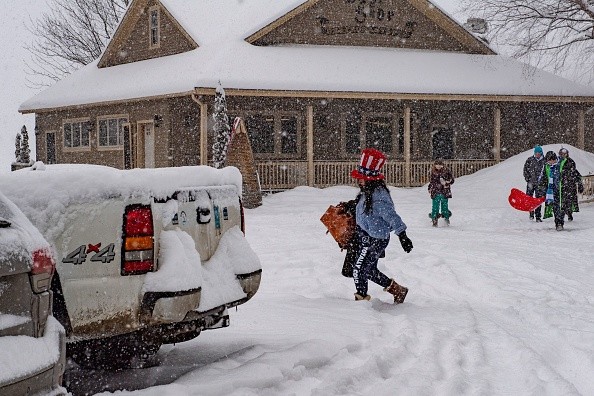People are wondering what the rest of March will bring after a highly busy January that provided considerably above-normal snow to several regions in the Eastern United States and a February that brought many above-normal temperatures
While the days lengthen and the calendar moves closer to spring and summer, the month of March has a history of producing numerous noteworthy snowstorms.
According to the National Weather Service, two of the top three most powerful snowstorms to hit the United States since the 1950s occurred in March.
The Blizzard of 1888, which delivered heavy snow to the northeast after a period of fairly mild weather, is possibly the most renowned March storm.
The snow will still be here according to David Epstein

According to David Epstein in Boston, a strong squall line brought cooler air in overnight, and you may notice a few limbs fallen this morning.
The winds have died down somewhat this morning although they are still blowing.
Today, March 9, will be windy and sunny, with temperatures remaining in the lower 40s. Monday's warm weather averaged 21 degrees above usual, contributing to the first week of March is more than 2 degrees over average.
Snow in March is very different from snow in the colder months.
For one reason, snow that falls during the day is battling the sun's higher angle. Even when it's gloomy, sunlight penetrates and heats the asphalt sufficiently to melt snow.
This makes it more difficult for snow to build on the roadways, which is exactly what will happen on Wednesday.
The snow will fall in the afternoon and might fall lightly for many hours around the afternoon commute.
The snow will finish in the early evening hours of Wednesday.
Temperatures will drop below freezing, and there may be a few ice places Thursday morning due to frozen precipitation.
With plenty of sunlight and temperatures nearing 50 degrees Thursday afternoon, all of the snow will melt.
The most dramatic weather in the past
According to Weatherboy, the most spectacular March weather happened in 1888.
Unseasonably warm weather swept along the east coast, prompting many to believe that spring was on its way.
They are, however, completely incorrect. The uncommonly warm weather was accompanied by drenching rainfall in locations like New York City.
The swiftly increasing storm pushed cold air into the Mid Atlantic on the night of March 12, 1888, soon transforming the light rain to chilly, heavy snow.
The National Weather Service forecasts that this nor'easter dumped up to 50 inches of snow in areas of Connecticut and Massachusetts, and up to 40 inches in sections of New Jersey and New York.
For days, the area was immobilized by the Blizzard of 1888.
Massive snowdrifts shut down the typically bustling New York - New Haven rail corridor for eight days.
The storm's traffic bottleneck contributed to the development of the first subway system in the United States, which debuted nine years later in Boston.
Communication was also affected; the telegraph system was disrupted, effectively separating Montreal and the majority of significant northeastern cities from Washington, DC, to Boston for days.
Following the hurricane, New York began burying its telegraph and telephone wires to minimize future storm damage.
More than 200 ships were either stranded or wrecked from the Chesapeake Bay northeast to New England, losing more than 100 lives at sea.
© 2025 NatureWorldNews.com All rights reserved. Do not reproduce without permission.





